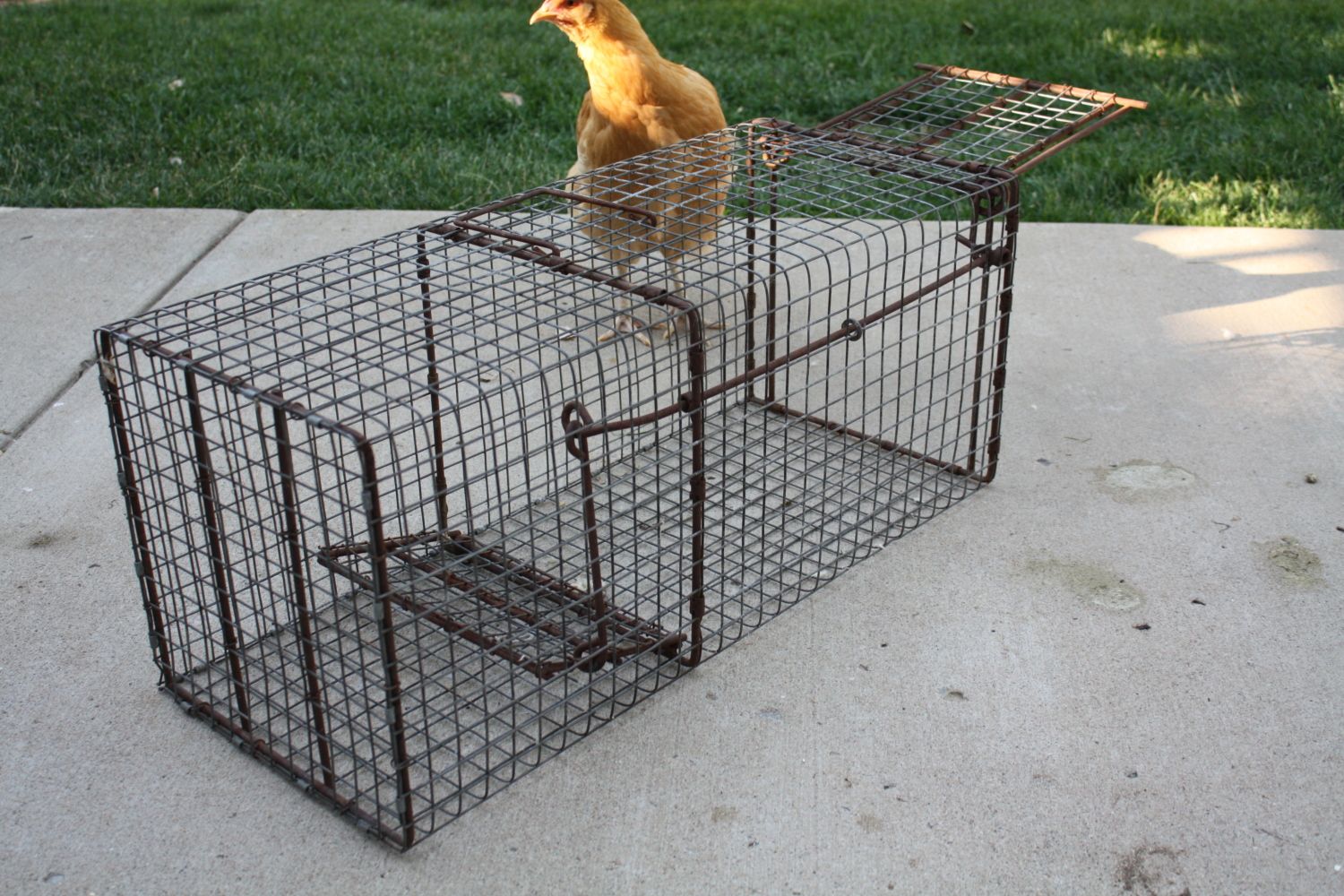We've lost 4 hens in the past 4 months to a predator. Our hens live in a coop, raised 3 feet off the ground. Once, we found a place that the fencing had been chewed through and we repaired it. I can't figure out how they are getting in but suspect that something was able to pry the door open some and squeeze in. But, this has gone on too long and I think I'm set on trapping whatever it is.I'm going to TSC today to pick up a raccoon trap. We'll relocate anything we catch.
Does anyone have any advcie on what to use as bait inside the trap or any other trapping advice?
Thanks so much!!
From what you written, I'm going to assume that you are having a coon problem. They can squeeze through some surprisingly small openings and they are deadly on poultry.
There are not many predators that can be effectively trapped with a cage trap, but coons can be taken in quantity with this method of take. Don't use a Havhart traps, they are cheap and if you catch a big boar coon the animal will force its way out. If that happens, every coon after that will escape from the trap...and all your doing is educating coons to avoid live traps. If you have a person come out and trap and they start to get out havhart traps, or traps of that style, thank them for their time, send them on their way and get a real trapper.
Here is the cage trap that you want to use for trapping coon:

This trap has a welded wire frame and uses heavy duty wire ring washers to hold the trap closed. There is not a coon alive that will get out of the trap once they are in it.If you have a non-target catch that you need to release, just roll the trap over, the heavy duty washer will slide down the wire rod and the trap door will flop open.

Marshmallows work and have eye appeal, I'll use them if I need to draw an animal to the trap. But I want that coon to be drooling and wanting to get in my trap. I make up my own bait for use in the live trap when I'm out to get coon. Start with a clean 5 gallon bucket. Fill the bucket 3/4 full with dry dog food. For the next step I wait till my wife is GONE shopping and won't be back soon, so that I can get it done and clean up my mess before she gets back home. Take a can of sardines and blend the contents up in the blender with about 3 cups of cheap cooking oil, mix this slurry into the 5 gallon bucket with the dry dog food and stir well. There is not a coon on earth that will pass by this offering.
Best results wil be obtained if you can set the cage traps along the animal's route of the travel. When you set the trap make sure that it sets firm and level on the ground. If need be, used a shovel to create a level location. The fresh digging will further serve as an attracttant. When the trap is in its bed there should be no wobble. Drive a stake on either side of the trap to keep the animal from rolling the trap over and to keep the trap from moving. If the coon is able to roll the trap they will simply force their way out of the trap. A big boar coon is an amazingly powerful animal. If you are sure what type of animal is getting your poultry, then smooth the ground in front of the trap door, maybe evenadd some soft dry earth so that you will be able to get a look at the tracks that this predator is making.
After you have located a place for the trap(s) and they are properly set, camouflage the traps so that 2 legged types don't walk away with you trap. Well made cage traps are not cheap traps. Wire the doors of the trap open for a few nights and bait with your bait mix. You'll know when they have found the traps, all the bait will be gone every morning and the ground under the bait location infront of the treadle will be dug up, through the trap wires of the cage bottom.

You may even have to re-camouflage the trap. They really like this bait. After a few nights and the coon have made your traps a regular stop on their travel routes, set the traps and start catching the critters.
You do not want to just go out and set a trap and expect to start catching these animals. They are not stupid, they will notice that this thing is new and they will be very cautious when they first encounter the trap. The reality is that any coon that sets off the trap and gets away is now an educated coon; making them much more difficult to trap...catch them the first time. Don't give them a second chance to evaluate your trap. After a few nights the group will start to thin out, and your catch rate will drop off. They are getting cautious and may even start to avoid the trap...no problem....wire the traps open again for a few nights, bait 'em and check each morning, When they start hitting regularly again, unwire the trap and start the process over again.
Enjoy.


